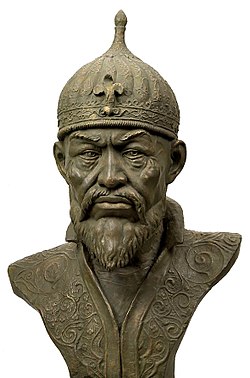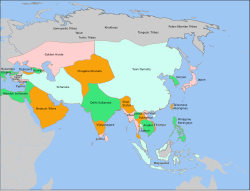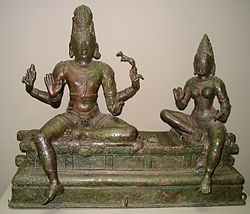| Millennia |
|---|
| 2nd millennium |
| Centuries |
| Timelines |
| State leaders |
| Decades |
| Categories: |
| Births – Deaths Establishments – Disestablishments |

The 14th century lasted from 1 January 1301 (represented by the Roman numerals MCCCI) to 31 December 1400 (MCD). It is estimated that the century witnessed the death of more than 45 million lives from political and natural disasters in both Europe and the Mongol Empire. [1] [2] West Africa experienced economic growth and prosperity.
Contents
- Events
- 1301–1309
- 1310s
- 1320s
- 1330s
- 1340s
- 1350s
- 1360s
- 1370s
- 1380s
- 1390–1400
- Undated
- Inventions, discoveries, introductions
- References
In Europe, the Black Death claimed 25 million lives – wiping out one third of the European population [3] – while the Kingdom of England and the Kingdom of France fought in the protracted Hundred Years' War after the death of King Charles IV of France led to a claim to the French throne by King Edward III of England. This period is considered the height of chivalry and marks the beginning of strong separate identities for both England and France as well as the foundation of the Italian Renaissance and the Ottoman Empire.
In Asia, Tamerlane (Timur), established the Timurid Empire, history's third largest empire to have been ever established by a single conqueror.[ citation needed ] Scholars estimate that Timur's military campaigns caused the deaths of 17 million people, amounting to about 5% of the world population at the time. Synchronously, the Timurid Renaissance emerged. In the Arab world, historian and political scientist Ibn Khaldun and explorer Ibn Battuta made significant contributions. In India, the Bengal Sultanate separated from the Delhi Sultanate, a major trading nation in the world. The sultanate was described by the Europeans as the richest country to trade with. [4] The Mongol court was driven out of China and retreated to Mongolia, the Ilkhanate collapsed, the Chaghatayid dissolved and broke into two parts, and the Golden Horde lost its position as a great power in Eastern Europe.
In Africa, the wealthy Mali Empire, a huge producer of gold, reached its territorial and economic height under the reign of Mansa Musa I of Mali, the wealthiest individual of medieval times, and perhaps the wealthiest ever. [5] [6]
In the Americas, the Mexica founded the city of Tenochtitlan, while the Mississippian mound city of Cahokia was abandoned.






